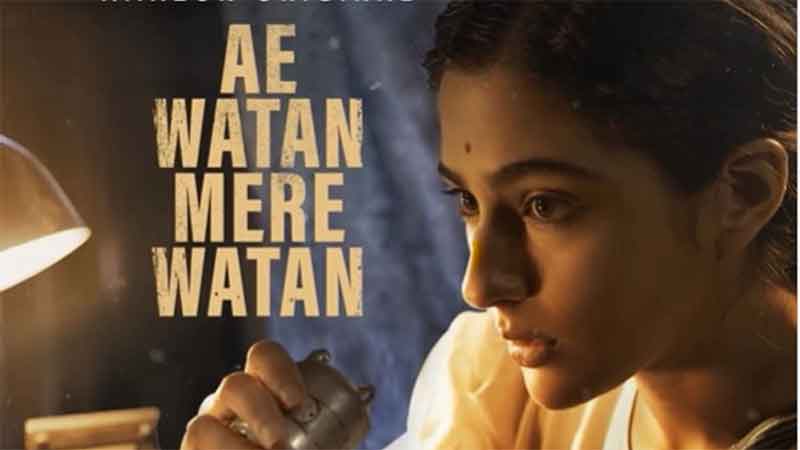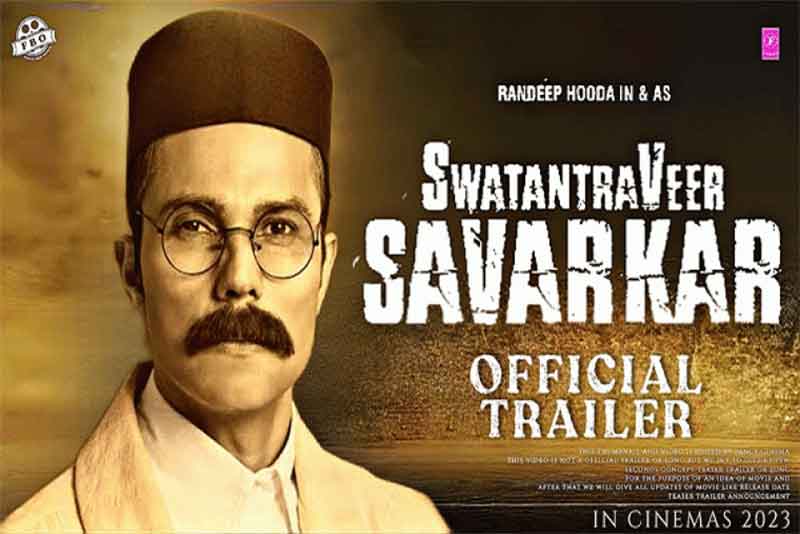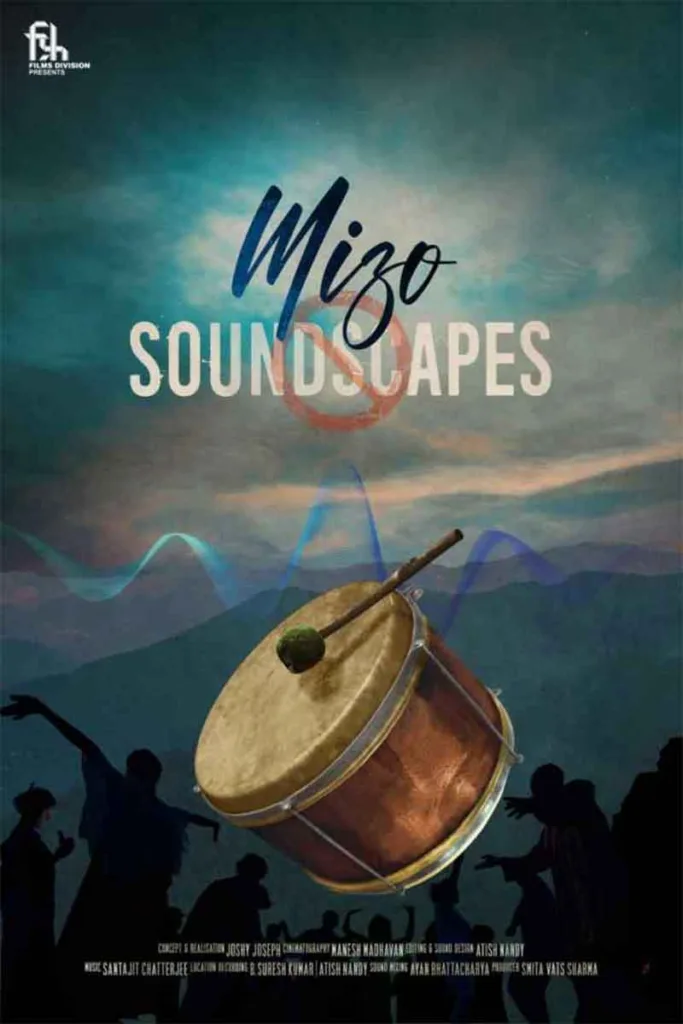Established in 1948, under the patronage of the Ministry of Information and Broadcasting, the Films Division stands as one of the pioneering institutions in post-independent India that played a crucial role in shaping and envisioning the country’s identity as a post-colonial nation. As the largest film/moving image depository in India, it was initially meant to manage the production and distribution of news reels and documentary films for the larger project of nation building, integration and development (Deprez 2013, 149). Through its extensive collection of multilingual documentaries, distributed nation- wide through various institutional and infrastructural channels involving state governments, government departments, and commercial cinema theaters, the Films Division (hereafter FD) has tried to ‘interpret India to Indians’ (Bhownagary 1956, 12). Often Ima- gined itself as a documentary filmmaker, the FD was called the ‘author of the national vision’ (Roy 2007, 55–56). As a result of this propagandistic orientation of the FD, it was seen as ‘a gigantic failure in generating any noteworthy freshness or vibrancy in documentary filmmaking in India’ (Gangar 1987, 35).
Despite being criticized as a ‘normative imaginings of nationhood’ (Vasudevan 2001, 62), many scholars (see Battaglia 2018; Roy 2007; Sutoris 2016) have acknowledged a stream of FD films that exhibited a sense of independence and experimental spirit. While the primary objective of the FD was to convey the developmental vision of the nation, there existed transgressive voices within the institution that created innovative, experimental and dissident cinematic works despite operating within the confines of state censorship. Films such as Face to Face (1967) by T. A. Abraham and K. S. Chari, Explorer (1968) by Pramod Pati, I Am Twenty (1967) and And I Make Short Films (1968) by S. N. S Sastry, among others can be marked as experimental films within the FD that challenged the collective and homogeneous vision of FD films. Labeled as ‘experimental films sponsored by the state’ by Shai Heredia, these filmmakers tried to reshape the documentary form in India by crafting subversive works from within the confines of the state propaganda apparatus (Gopalan, Heredia, and Jhaveri 2023, 377). This was very evident in Mrinal Sen’s praise of Promod Pati’s experimental film Explorer (1968) when he wrote ‘something is happening now, if not in the commercial circuit, somewhere else – in the Films Division’ – and that people like Pati were ‘indulging in such madness’ and ‘breaking new ground’ (Sen, as cited in, Jain 2013). While working inside the constraints of the FD, these filmmakers have tried to push the limits of the medium and discuss themes that transcended the ‘normative imaginings of nationhood’. Similarly, in her recent research, Ritika Kaushik sheds light on how SNS Sastry disrupted the official archive of state-sponsored films from within the FD through his film And I Make Short Films (Kaushik 2023).
Joshy Joseph is one such documentary filmmaker from the FD who has made original and experimental films within the confines of state censorship. Initiating his vocational trajectory within the FD in the 1980s, a temporal epoch characterized by a discernible relaxation of stringent statist control, divergent from the heightened state intervention prevalent during the Emergency era, Joseph negotiated an environment ostensibly affording in-house filmmakers a modicum of latitude. However, it is imperative to note that even during this ostensibly liberal period, instances of censorship and state control persisted. For example, Prakash Jha’s directorial endeavor, Faces After the Storm (1981), was subjected to censorship and prohibited from release. Similarly, filmmaker K. Balakrishnan Nair faced scrutiny and eventually he had to resign from the institution due to the political content in his films such as Power to the People. When tasked with creating a propaganda film elucidating India’s New Economic Policy, Joseph demonstrated a deliberate divergence from cinematic endeavors aligned with the valorization of statist neoliberal developmental and propagandistic agendas. Instead, he conceived Streamlining Public Sector (1991), a work indirectly critiquing the government’s indiscriminate developmental and economic policies.
According to Shai Heredia, by 2000 the FD had become obsolete, churning out only a handful of conventional documentary films. Its once-rich celluloid history had become a relic of the past, with filmmakers eagerly transitioning into the digital domain. The FD, if utilized at all, was relegated to a mere archival repository for government propaganda films, accessed solely for historical stock footage (Gopalan, Heredia, and Jhaveri 2023, 377). Although the FD was going through such a paradigm shift during this time, Joseph emerged as a filmmaker who produced noteworthy works focused on the North Eastern states of India, shedding light on the prevailing statist violence in the region. Notably, his films during this period, including And the Bamboo Blooms (1999) and Wearing the Face (2000), offer nuanced exploration of the cultural, linguistic, ethnic, and political issues and tensions inherent to the region. Diverging from the conventional Films Division documentaries on the North East, which often adopted a tourist-centric perspective by emphasizing biodiversity or cultural diversity, Joseph’s oeuvre delves into pressing con- cerns such as military occupation, ethnic conflicts, and gender issues. For instance, in the initial sequences of Wearing the Face, the film captures an episode where military officials intervene and obstruct his filmmaking process. While Joseph refrains from explicit criticism of these military interventions, he strategically utilizes it as a contextual backdrop to contemplate diverse facets of freedom and control. Implicitly, the film underscores the gravity of the situation in the North Eastern states, suggesting that if a government official encounters constraints on mobility, it raises pertinent questions about the freedom of ordinary citizens in these regions.
Since 2014, with the ascendancy of the Bharatiya Janata Party (BJP) to governmental authority, the FD has witnessed a covert series of developments, including instances of severe censorship, the infiltration of Hindutva ideological tenets, and a substantive re- evaluation of Indian history, weakening the secular fabric of the nation among other phenomena. Notwithstanding this profound ideological metamorphosis within the FD, Joseph maintained his commitment to cinematic pursuits during this time without capitulating to the role of an adherent propagator for the ruling establishment. For instance, in his latest cinematic endeavor, Laparoscopic Cinemascapes (2022), which centers on Aribam Syam Sharma, a prominent figure in Manipuri cinema, Joseph initiates a subtle political discourse on Irom Sharmila,1 a topic that does not have direct thematic correlation with the primary content he addresses. Through the strategic utilization of Sharmila’s photographs and Aribam Syam Sharma’s perspective on both her images and personality, Joseph skillfully highlights the core cause she championed and critiques the governmental apparatus that opposed her stance. The inclusion of Sharmila and her protest within a FD documentary on a film maestro demosntrates an experimental and critical methodology to counteract the prevailing jingoism endorsed by the ruling party. Diverging from conventional biographical documentaries centered solely on the documented subject, Joseph distinguishes himself by inserting his presence into the frame, thereby unveiling the comprehensive process of filmmaking. This distinctive approach also facilitates the expression of the filmmaker’s perspectives through the questions and comments he interjects, challenging the conventional realistic expectations in bio- graphical documentaries. Such cinematic prowess, characterized by innovative editing, creative use of images, directorial interventions, self-reflexive turns, among other attributes, positions him as one of the contemporary ‘transient outliers’ within FD (Sutoris 2016, 165). His disdain for the typical FD films is visible in cinematic approaches that are dramatically different from many veteran filmmakers from the FD. Most of his films are an eclectic mix of real life footages, fiction and the experimental (Chatterjee 2021, 64). As a result most of his films defy easy classifications.
As a documentary filmmaker hailing from Kadamakkudy, a small island in Kerala, Joshy Joseph’s films explore the fluidity of life and existence within a world characterized by different ideologies. While he does not have a single thematic focus, his cinematographic oeuvre robustly incorporates ethnic life and regional existence. Unlike many other FD documentary filmmakers, Joseph’s films do not revolve around specific issues or themes, but instead delve into the mundane aspects of human existence. The politics in his films is subtle, and he often experiments with cinematic techniques to capture nuanced perspectives. His films challenge conventional genre boundaries and explore themes of mortality, creativity, and change. Joseph, as a filmmaker, views cinema as a democratic space where the subjects and his own subjectivity converge. He has also associated and assisted renowned filmmakers such as Mani Kaul and Adoor Gopalakrishnan. Recognized with multiple awards, including seven national awards, Joseph’s film Sarang-Symphony in Cacophony (1997) is a motivational documentary showcasing the commitment of a young couple who strive to rejuvenate their valley through organic farming. Sentence of Silence aimed to redefine the social ethos of a con- ventional religious family. And the Bamboo Blooms (1999) is a study on the relationship between the tribal population of the North East and the bamboo plants, examining how the flowering of bamboos affects the lives of the people there. Wearing the Face (2000), a National Award winner for the Best Investigative Film in 2001, explores the veiled existence of Manipuri rickshaw pullers from a humanitarian perspective. The film investigates why these rickshaw pullers conceal their faces. Journeying with Mahasweta Devi (2009) is a creative documentary chronicling the filmmaker’s journey with writer-activist Mahas- weta Devi. One of Joseph’s most controversial works is One Day from a Hangman’s Life (2005), which was denied screening in West Bengal by the ruling Left government at the time. The film depicts the everyday life of Nata Mullick, a hangman. His latest film Laparoscopic Cinemascapes (2022) focusses on the veteran Manipuri filmmaker Aribam Syam Sharma. In the context of the recent controversial decision by the Union Ministry of Information and Broadcasting to merge Films Division with the National film Development Corporation, Joshy Joseph speaks about his life and politics as a filmmaker working inside/out of Films Division.
Q: You were born in a village in Kerala, a southern state of India, where the film culture was vibrant. However, during that time, documentary films were not widely accessible to the public. Kerala’s film scene predominantly revolved around fiction films, and there were only a handful of names associated with documentary filmmaking. Despite this, you have chosen to pursue documentary filmmaking for the past three decades, resisting other tempting avenues. Documentary films have become your passion. What motivated you to embrace documentary filmmaking in an era when it was not as favored or supported as other mediums?
I was born in a village in Kerala where the documentary culture was virtually non-existent. However, I had the opportunity to watch numerous popular fiction films in Kerala during that time. My early exposure to films was primarily through fiction. I was an avid viewer of feature films and would diligently write down the credits in a notebook, a habit I still maintain. After completing my degree, I frequented the theaters in Ernakulam, watching films in all twelve of them.
During my graduation, I aspired to join the prestigious Film and Television Institute of India (FTII). However, I faced rejection in the interview due to my lack of proficiency in English. Writing came more naturally to me than speaking, which was a common struggle for many Malayalee youth at that time. Interestingly, even renowned cinematographer Sunny Joseph faced rejection multiple times before gaining admission to FTII. He had to improve his English speaking skills after each rejection. After being rejected by the Film Institute, I felt that my dream of working in cinema was shattered. However, an opportunity arose at Films Division for a language translator position, including a vacancy for Malayalam. Though it was not my initial dream, I applied for the position out of practical necessity, as it would provide me with a means of livelihood.
My proficiency in writing helped me to secure the job at [the] Films Division. Working there reignited my love for cinema. However, I found the experience of writing narration for documentaries to be a frustrating abuse of both writing and cinema. I was compelled to write even the minutest details of visuals and sounds. For instance, if there was an image of a barking dog, I had to write ‘dog barks.’ I felt that I was undermining the art of cinema and betraying my love for the medium. It was a conflicting experience, as I received a salary for describing something that already had a visual element, yet I would not be paid if I remained silent.
Working at [the] Films Division did have its advantages. I had the opportunity to encounter a microcosm of India within the office, as there were writers representing various languages. Coming from a small village like Kadamakkudy in Kerala, it felt like experiencing the diversity of India. Due to the loose system in place, we had the chance to influence the ideology of Films Division. I recall an incident while working on a family planning video where one of my senior commentators was asked to say ‘dho baccha bas’ (Two children are enough). This put him in an awkward position since he had nine children. However, he altered the tone of his delivery, conveying a different meaning to the listener. It taught me the importance of language and the manner in which it is presented. This realization sparked my interest in experimenting with the cinematic form.
Once I was a part of [the] Films Division, I began submitting scripts for film proposals, which were accepted but not granted permission for production. I decided to take matters into my own hands and produced my first film using the money my father had given me to buy a new house. Unfortunately, I ended up losing all the money, but it was a valuable lesson in the art of filmmaking. It was in Kolkata that I started making films more earnestly. While initially focusing on nonfiction, my horizons expanded when I arrived in the North East. I ventured into making films, blurring the boundaries between fiction and nonfiction. People would comment that my fiction films resembled nonfiction, and vice versa. There was a distinct overlap between the two in my works. My experience has taught me that when you create something from the depths of your soul, it defies categorization. If you are true to your artistic vision and conscious of your creative choices, you become both an artist and an activist.
Q: The conventional categorization of documentary filmmaking in India often identifies two prominent schools: Films Division-funded documentaries and independent documentaries produced outside of Films Division. However, there is a difference in opinions among critics when it comes to the historical understanding of independent documentary practices in India. Many of the scholars argue that independence in documentary filmmaking emerged primarily after the 1970s with Anand Patwardhan. On the other hand, some argue that independent documentary in post-colonial India can even be traced back to the works of filmmakers such as S.N.S. Sastry, P.V. Pathy, and Sukhdev. How do you perceive the birth of independent documentary films in India? Do you view it as an extension of the independence practiced during the colonial period, or as a continuation of the efforts made by Sukhdev and S.N.S. Sastry in the 1960s and early 70s? Moreover, how do you interpret this ‘conundrum of independence’ and its impact on historians studying documentary filmmakers in India? As a filmmaker who both works within and outside of Films Division, how do you engage with this ongoing debate? Where do you locate your own lineage as a filmmaker?
The conundrum you mentioned primarily concerns academics and may not be within my expertise to comment on. However, I hold a critical stance toward that argument. I would argue that documentary films after Anand Patwardhan are significantly distinct from those that came before. While elements of independence can be found in the films of Mani Kaul rather than Sukhdev, despite Kaul’s work within [the] Films Division. Even when dealing with conventional subjects like puppeteers in Rajasthan, Kaul subtly infused his visuals with a profound sense of independence. I perceive a raw artist’s interpretation of society in his films. Kaul worked for Films Division for 20 years without claiming to challenge the system from within or similar claims. Even in his films on fine arts or other art-related themes, I can sense the rebellion of an independent filmmaker who questions the system. Although Mani Kaul’s films may appear to be apolitical, I believe that politics is not only about conflicts but also about how you frame the narrative. Mani Kaul exemplified this approach. However, this independence was not as vocally expressed as in the works of Anand Patwardhan or the documentary filmmakers who emerged in the 1970s. I do question the argument that Sukhdev was an independent documentary filmmaker in the true sense of the term. To me, Sukhdev played it safe within the system, despite his rebel image, as he ultimately supported Indira Gandhi’s ruthless measures during the Emergency. How could an independent filmmaker do that? In comparison, I find more independence in the cinematic and artistic brilliance, albeit silenced by institutionalization, of Mani Kaul’s films than in Sukhdev’s. I do not intend to undermine Sukhdev’s rebellious nature, but he also served as a court poet, while Mani Kaul did not. There is a significant difference between films made by Mani Kaul or Sukhdev and those of Anand Patwardhan. Anand’s films marked a complete paradigm shift. He never claimed to be an artist but rather was involved in the JP (Jayaprakash Narayan) movement during the Emergency. He started with photography for the movement’s propaganda and then transitioned into filmmaking to propagate JP’s ideologies and critique the system openly. Anand was never part of the establishment and set new paradigms for independent documentary filmmaking in India. We should acknowledge this distinction. What sets Anand and the filmmakers who emerged after the 1970s apart is their approach to filmmaking as activism. Can we find that sense of filmmaking before them? On the other hand, Mani Kaul was a complete artist. I began my filmmaking journey with this conviction. One of the ideals I have nurtured as a filmmaker is the possibility of combining Mani Kaul’s visual vocabulary with Anand’s political convictions, opening up a new path. In fact, this is what I have been striving for in my films over the past few decades.
Q: Having worked for the Films Division for over three decades, an organization affiliated with the state that often exerts significant influence over the production of your films, do you perceive your decision to remain there and create films according to their directives as a compromise on your part? How do you manage to nurture and express your independent and creative identity within the context of your work at Films Division? How do you navigate or navigated the balancing act between the structural demands imposed upon you and your own individual desires as a filmmaker?
The situation can be likened to a catch-22. It’s akin to war pilots who apply for leave on the grounds of going mad. They must go through all the formalities and fill out a valid leave application form. However, if they write the form accurately, they won’t be granted leave because the authorities claim they aren’t mad enough to write such an application. When I create overtly political films, I either produce them for myself or seek an independent producer. Yet, when I make films for [the] Films Division I explore different forms and employ my filmmaking expertise. For instance, when working on a film about Irom Sharmila, I become a cunning craftsman, politically experimenting with form. In a sense, it involves compromise. However, I don’t create films that go against my ideology, even if FD requests it. I only make films with which I am ideologically comfortable. In that regard, I am not compromising like Sukhdev, who justified the Emergency. Additionally, I use predominantly my own funds, including my FD salary, to produce explicitly political films. Do you find this negotiation with FD deplorable?
I have been able to do this due to [the] FD’s loose structure in the past. When I receive pay checks, I am not concerned about promotion, higher committees, or accolades from authorities. My primary aim is to be a filmmaker. I am uncertain about the future of FD. Although I was aware of the system’s drawbacks, I had to take the job to support my family. However, I strategically moved away from the norms of [the] FD to survive as a filmmaker. When making films for others, whether it’s FD, PSBT (Public Service Broad- casting Trust), or a foreign producer, a filmmaker is not truly free. The concept of absolute freedom is a myth unless you create your own films. In that sense, how many independent filmmakers do we have in India today? When you hold a firm political stance, it is difficult to make documentaries without underlying currents. For instance, in Iran, filmmaker Jafar Panahi faced victimization and marginalization by the state due to the nature of his films. Yet, Panahi never left Iran; he remained an insider and created exceptional films critiquing the system. I, too, will strive to make a similar effort from within the system. A true artist cannot be stifled or silenced; only inadequate artists resort to complaints. Furthermore, as a Class One Gazetted officer, I possess tremendous access to all of India. I utilize this ‘privilege’ to create films and tell stories that might otherwise be unattainable for others. This advantage was evident during my shoots in the north-eastern states of India. Additionally, being a recipient of seven national awards, I find solace and support under its umbrella while creating films that critique the system.
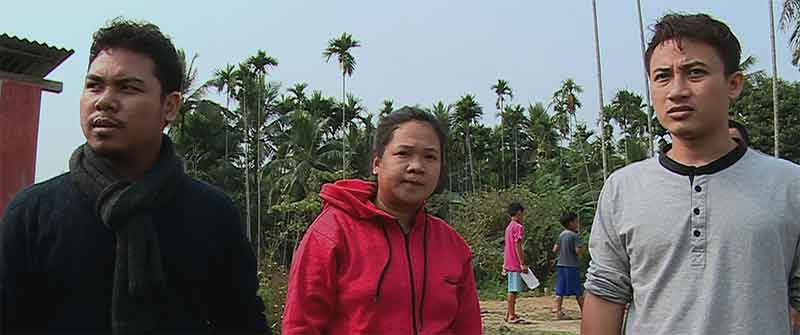
Q: As a filmmaker, what led you to focus primarily on the North Eastern states and the issues there? It is worth noting that a significant number of films on the North East are made by filmmakers from outside the region, often portraying the place and its people as exotic. How do you ensure that, as an outsider, you avoid exoticizing the region, its people, and its culture while making films about the North East?
During my extensive stay in Kolkata as part of my work in [the] Films Division, I had the opportunity to travel across the North Eastern states. Naturally, I encountered various socio-political events and tensions that were unfolding in those places. Based on my experiences, I strongly believe that if you approach your films with sincerity, any film you make about or in the North East should be nothing short of a political documentary. It is not necessary to film in conflict zones to capture the essence of the region.
For instance, my first documentary in the North East, And the Bamboo Blooms (1999), initially focused on the environmental aspects of bamboos, which bloom only once every 25 years. However, as the project progressed, I realized that the underground movements in Mizoram, such as the Mizo National Front, which challenged the Indian government, were closely connected to the cyclic nature of bamboo. The flowering cycle of these plants led to increased rat fertility, resulting in crop destruction and the spread of diseases.
Another film, Wearing the Face (2000), explored the lives of college-going rickshaw pullers in Manipur who were forced to migrate to distant cities like Imphal due to tribal conflicts. These individuals always covered their faces with a cloth and sunglasses while working, concealing their identities from the people they interacted with during their college hours. This act of masking eventually evolved into a culture of recognition, where masked rickshaw pullers were acknowledged as belonging to an educated class, enabling them to earn more than they would have otherwise.
From a filmmaker’s perspective, I discern the underlying politics in these stories. Although the act of covering one’s face may not appear overtly political, it holds significant political implications. Similarly, the film Making the Face serves as an entry point for the filmmaker into the identity politics of transgenders in North East India, where each person is asked to prove their identity. The movie portrays the makeup parties that precede marriages in North East India, where only girls are allowed to adorn the bride and boys beautify the groom. As Tom Sharma, a transgender, had access to both genders, it challenged the rigid gender binary prevalent in North East Indian society.
While these films delve into individual instances, they possess a strong political essence at their core. Their approach is never from an exotic standpoint. Many of these films are self-reflexive and serve as a personal exploration for the filmmaker. In the beginning of Making the Face, there is a scene where the military obstructs our filmmaking process. This militarized context of Manipur is utilized to explore my own identity as a filmmaker. It is akin to turning the camera inwards, eschewing a tourist’s perspective. However, the larger political context of the place is established to connect with the everyday lives of the people and the filmmaker there. I have never claimed that my films represent an authentic take on the North East. Rather, they offer a reflexive perspective on certain issues I encountered during my time in the region.
Q: Your films, such as A Poet, A City, A Footballer, One Day from a Hangman’s Life, With Quietude to Nirad, and a few others, can be categorized as biographical in nature, either directly or indirectly. What distinguishes each of these films is the unique narration and techniques employed, providing a distinct experience with each one. What drives your choice of employing different techniques and methods for different films?
My interest lies in constructing a narrative that captures a representative section from a person’s life, rather than presenting a comprehensive account of macrocosmic factual events from the life of a significant figure. For instance, in One Day from a Hangman’s Life, I focus solely on a single day from the protagonist’s life. On the other hand, in the film about Mahasweta Devi,5 I explore the dimensions of space and time, creating a poetic journey into the world of the writer. Such an approach cannot be expected in One Day from a Hangman’s Life.
Many contemporary biopics tend to present monotonous visuals, even if they are based on the life of an individual. However, there are numerous ways to experiment with biographical films. Filmmakers should surpass the technicalities of the camera and the artificiality of constructed visuals. They should delve into the incommunicable aspects and explore what may not be readily accessible to viewers. If a filmmaker adheres to a particular style in all their films, it can become monotonous. Each film demands its own style and techniques to effectively convey its essence.
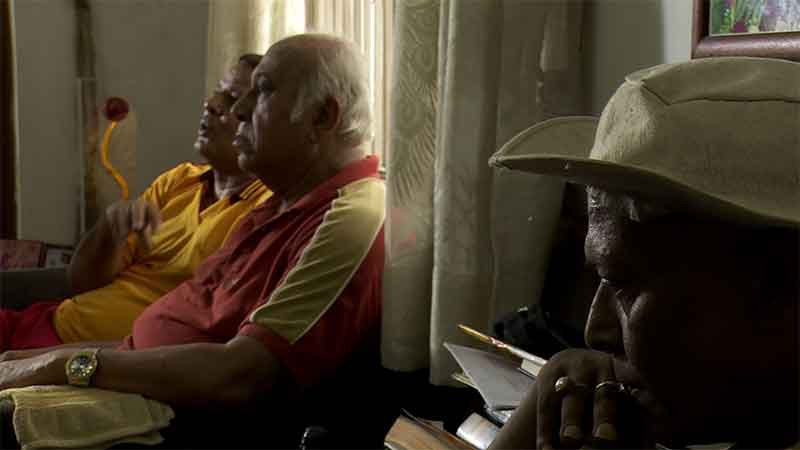
As a filmmaker who had grown up through watching fiction films and who lacks formal training in filmmaking, how do you navigate the conventional differences between fiction and documentary films? In the history of Indian cinema, documentary films have traditionally been associated with representing reality. As a documentary filmmaker without a film school background, how do you perceive this binary? However, contemporary filmmaking has made attempts to blur this binary, and your films, in particular, seem to challenge it. For example, in A Poet, a City, and a Footballer (2015), your portrayal of Calcutta appears more fictional than real. Although all your films are categorized as documentaries, do you believe in the essential divide between fact and fiction?
There is no need to rigidly separate fact and fiction in cinema, and besides, the traditional use of animation is being innovated upon. Filmmakers need to engage with the audience and learn new techniques of the craft. While the audience may be drawn to films that do not exceed a 90-minute duration, there are exceptional filmmakers who defy this tradition. Filmmakers must embody the playfulness of a cat while engaging with the audience, and success lies in their ability to position themselves as both filmmakers and spectators.
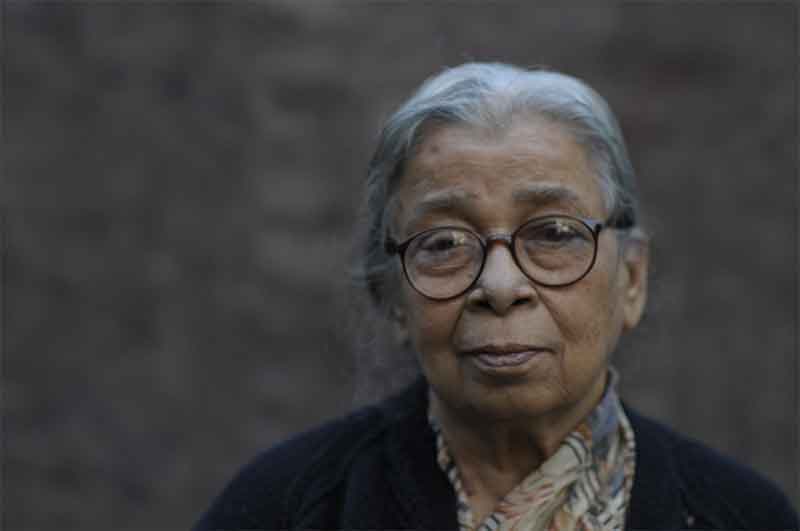
Mahasweta Devi, a significant intellectual and rebellious voice in India, played a major role in various human rights issues. You are perhaps the only filmmaker in India to have made a feature-length film about her. Journeying with Mahasweta Devi (2009) creatively breaks the boundary between the poet and the filmmaker. It is not simply a biography about her but rather a filmmaker’s journey alongside her. In the film, she humorously remarks, ‘I am a rascal, and the one making this film is also a rascal.’ Could you elaborate on your relationship with her and the influence she had on the making of the film?
My meeting with Mahasweta Devi was prompted by her desire to watch one of my films that had been banned by the Left regime in West Bengal. While most intellectuals in Calcutta remained silent, she was the sole dissenting voice in support of my film. During her time with me, I chose not to employ a professional cameraman to capture the real and natural Mahasweta Devi. It was a unique experience as a filmmaker to have a world- renowned writer willingly surrendering herself to the hands of a filmmaker, unaware of being recorded. This realization highlighted the constraints that exist within the realm of cinema. She was always on the move, not bound by any ideology. I wanted to capture this by playing with the formal style of filmmaking. It felt inappropriate to depict a perpetually mobile person through static shots. As a filmmaker, I positioned myself as someone who moved alongside her, rather than observing her life from an ‘authoritative’ filmmaker’s perspective. One of the challenges I faced was selecting the appropriate perspective, since the 140 hour footage I shot could be used to create a film either for or against Mahasweta Devi. Over the course of the film’s two-year pro- duction, I evolved both as a filmmaker and as an individual. She also held a mutual respect for me as a filmmaker and the kind of work I do.

Q: One Day from a Hangman’s Life holds significant importance in the history of documentary films in India for various reasons. It stands out as perhaps the only documentary in India that received a commercial theatrical release, albeit being banned after just two days. What makes it peculiar is that it faced a ban during a period when West Bengal was governed by political parties with leftist ideologies, who were expected to advocate for the freedom of artists and intellectuals in the Indian context. Most intellectuals of that time remained silent, which created a paradoxical situation. As a filmmaker, how do you perceive this paradox?
The ban imposed by the West Bengal government on my film was a hard blow. It clearly highlighted the persistence of the Communist Party in upholding its Stalinist structures. There were no other reasons that could justify the transformation of the then Chief Minister, who was known for his support of cinema and literature. The liberal facade of the Communist Party, represented by leaders like Buddhadeb Bhattacharya, succumbed to the influence of conservatives who insisted on maintaining a hierarchical structure within the party. This ultimately led to the erosion of the Communist Party and their subsequent displacement in West Bengal. It was a stark example of fundamentalism that needs critical analysis.
Fundamentalism, regardless of its form, must be closely examined. Beyond political fundamentalism, conservatism can also be found within the film industry. Many serious filmmakers harbor a conservative side within themselves, which is why they often seek validation from a circle of like-minded friends who share similar philosophical perspectives. When my film was banned, very few intellectuals from Bengal came forward to offer support, except for Mahasweta Devi. This raises questions about the independence of so-called intellectuals. Similarly, conservatism permeates various political parties. Regardless of their proclaimed ideologies, there are ideological cracks within every individual. Some may exhibit these cracks openly, while others may conceal them. This incident taught me a valuable lesson. Furthermore, I realized that if you create documentary films that are worth watching, people will watch them. It is precisely because people watch and engage with such films that the government feels compelled to ban them.
Q: As someone with extensive experience working in the Films Division, how do you view the recent merger between Films Division and National Film Development Corporation? Filmmakers like Anand Patwardhan consider this move to be part of the government’s efforts to transform a public sector institution into a corporate entity. From your standpoint, as a filmmaker who has dedicated years to the Films Division, what are your thoughts on this decision made by the current ruling regime?
On a personal level, I find myself deeply saddened by this decision. With 24 years of experience as a filmmaker, I cherish countless fond memories of my time at [the] Films Division. Despite its origins as part of a statist plan, Films Division has been able to produce exceptional and ground-breaking films that remain relevant and contemporary even today. Filmmakers like Anand Patwardhan, who have ventured beyond [the] Films Division, are now raising questions about the government’s choice to merge the institution.
Producing films within the confines of [the] Films Division has always been a challenge. However, resourceful filmmakers have managed to overcome these limitations through their artistry, thanks to the institution’s loose structure. Unfortunately, such possibilities will likely vanish forever. While the Congress party, during its rule, utilized [the] Films Division as a tool to propagate their ideology, they seldom questioned the institution itself. The current regime, however, holds a distinct perspective, viewing all media through the lens of Doordarshan.7 Even before coming to power, they targeted [the] Films Division, and now it is the Prime Minister’s advertising cell that makes decisions inside this institution.
It is reasonable to anticipate that [the] Films Division’s future will predominantly consist of producing biopics of Bharatiya Janata Party (BJP) leaders. Regrettably, longing for the revival of the old Films Division seems futile. It was an unstructured and anarchic space, but it held numerous possibilities as a national institution. Once we received approval, the process of making films was smoother, with minimal interference from the government. However, over the past nine years, the interference has reached its peak, and the current closure appears to be the natural consequence of this situation.
Notes
- Irom Chanu Sharmila, also known as the ‘Iron Lady of Manipur,’ is an Indian civil rights activist and poet from Manipur. Starting a hunger strike on 5 November 2000, she aimed to abolish the Armed Forces (Special Powers) Act, 1958, which grants Indian armed forces extensive powers. The strike lasted 16 years, concluding on 9 August 2016.
- The term ‘Malayalee’ refers to an individual who hails from the Indian state of Kerala or has roots in the Malayalam-speaking region.
- Kadamakkudy is an island close to the city of Kochi in the Indian state of Kerala.
- The North Eastern States in India refer to the group of states located in the northeastern
region of the country.
- Mahasweta Devi was a prominent Indian writer known for her literary works such as Mother
of 1084 (1974), Rudali (1993) and Breast Stories (1997).
- West Bengal is a state located in the eastern part of India.
- Doordarshan is the public service broadcaster of India.
- Bharatiya Janata Party is one of the major right wing political parties in India.
References
Battaglia, Giulia. 2018. Documentary Film in India: An Anthropological History. New York: Routledge.
(This interview based article was first published in Studies in Documentary Films, an academic journal by Routledge. It can be read at https://doi.org/10.1080/17503280.2024.2305265)
Bhownagary, J. S. 1956. “Films for Fundamental Education.” Indian Documentary: A Quarterly Devoted to Short Films, Children’s Films and Visual Education 3 (2): 12–14.
Chatterjee, Vidyarthy. 2021. Calcutta Films: A Joshy Joseph Trilogy. Cochin: Cerebrum.
Deprez, C. 2013. “The Films Division of India, 1948–1964: The Early Days and the Influence of the British Documentary Film Tradition.” Film History 25 (3): 149–173. https://doi.org/10.2979/
filmhistory.25.3.149.
Gangar, A. 1987. “A Dreary Desert of Documentaries.” In Docu-Scene India, edited by
O. Chanana, 35–37. Bombay: Indian Documentary Producers’ Association.
Gopalan, Lalita, Shai Heredia, and Shanay Jhaveri. 2023. “Approaching India: Remarks on a Diversity of Moving Image Practices.” In A Companion to Experimental Cinema, edited by Federico Windhausen, 371–389. New Jersey: Wiley Blackwell.
Jain, A. 2013. “The Curious Case of the Films Division: Some Annotations on the Beginnings of Indian Documentary Cinema in Postindependence India, 1940s–1960s.” The Velvet Light Trap 71:15–26. https://doi.org/10.7560/vlt7103.
Kaushik, Ritika. 2023. “Destabilizing the Official Film Archive from Within: S.N.S. Sastry’s And I Make Short Films.” In Accidental Archivism: Shaping Cinema’s Futures with Remnants of the Past, edited by Vinzenz Hediger and Stefanie Schulte Strathaus. Meson Press. Accessed June 11, 2023. https://archivism.meson.press/chapters/cinekinships-creating-new-networks-of-film-culture/ destabilizing-the-official-film-archive-from-within-s-n-s-sastrys-and-i-make-short-films/.
Roy, Srirupa. 2007. “Moving Pictures: The Films Division of India and the Visual Practices of the Nation State.” In Beyond Belief: India and the Politics of Postcolonial Nationalism, edited by Srirupa Roy, 32–65. Durham, NC: Duke University Press.
Sutoris, Peter. 2016. Visions of Development: Films Division of India and the Imagination of Progress, 1948–75. New Delhi: Oxford University Press.
Vasudevan, R. 2001. “An Imperfect Public: Cinema and Citizenship in the ‘Third World’.” In Sarai Reader 01: The Public Domain, edited by Shuddha@Sarai and Geert@DeWaag, 55–67. Delhi: Sarai.
Interviewer
Rajesh James is an independent documentary filmmaker and an Assistant Professor of English at Sacred Heart College, Kochi (India).

